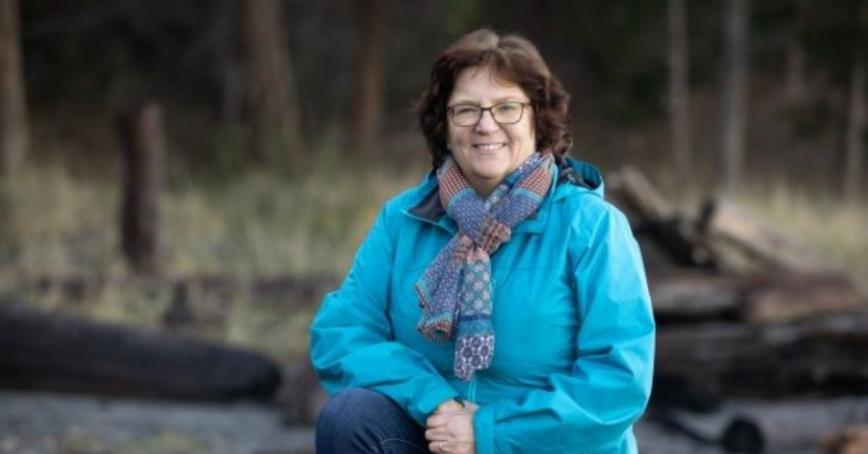Making it meaningful

Jacquie Gilson’s career has been dedicated to helping others learn about and appreciate Canada’s natural and cultural heritage. For her, it’s more than just dispensing information to people who take tours of mountain parks or other national treasures. Instead, she wants guides and interpreters to inspire and connect visitors on a deeper level.
That approach was the focus of Gilson’s Doctor of Social Sciences degree at Royal Roads. It also lead to her new self-published book, Inspired to Inspire: Holistic Inspirational Interpretation. The text – combining theory and practice – is for people working as interpreters, museum educators, guides, rangers and a host of other fields involving visitor experiences.
“I think the role of an interpreter is really to be there to inspire the guest to something, and that should be left open because people can be inspired to different ends,” Gilson says. “But we’re helping people connect to the place, event, idea or object in ways that are meaningful to them so that they’re inspired to go and do something after.”
Making it more than information
Gilson is a consultant and educator who worked with Parks Canada, provincial and municipal parks, and a non-profit conservation organization.
In one example, her approach to inspiring park visitors was tested by guides leading tours of the famed Burgess Shale fossils in Yoho National Park, in the Rockies. A portion of the guided walk that usually dealt with the geologic timeline by using photos and an educational talk was changed to involve visitors more directly.
“We asked, how can we make it more engaging at the level of head, heart and hands?” says Gilson. “More than just information.”
Visitors were divided into teams and given Velcro strips representing millions of years of the geologic timeline. They were asked to place cards containing critical geologic events in the right order on the timeline.
“What the interpreters found was that people got it right. They had some prior knowledge and they did the activity in a fun way within a team,” says Gilson. “The guests were way more likely to chat and learn from each other afterwards because they did that activity together. That’s one (way) we can be more holistic in our approaches.”
Enos Mills, an American naturalist and author, wrote that guiding is “more inspirational than informational” in his 1920 book, Adventures of a Nature Guide. The century that followed saw a move away from that ideal, but Gilson sees it switching back to something closer to what Mills proposed.
Inspiring personal commitments
“In our field, in the last 15 to 20 years, there has been a movement towards being more holistic. What we’re doing is trying to think of our visitors as whole beings. We’re aiming to inspire people through the head with information, but we also try to reach people through the heart and hands by having people engaged in an activity and opening it up for people on a tour to be inspired by each other and not just by the interpreter.”
Her Royal Roads doctoral research (for which she received the university’s Chancellor’s and Founder’s awards) considered literature exploring the psychology of inspiration – and that the concept of inspiration has two sides.
“It was this a-ha moment,” she explains. “One side is that people can be inspired by something. The other is that they can be inspired to something. When we apply that to our field, people can be inspired by people – the interpreter or other visitors, the place, or through participation. On the other side of inspiration, we hope people are inspired to take some sort of action, by exploring or learning more at the site or taking an action after they leave.”
Ultimately, the goal is to get interpreters, guides and the people who visit parks or museums to be more engaged with the place and each other. “Especially where a tour relates to action we need to take to improve our world,” says Gilson. “Instead of an interpreter lecturing about what everybody should do, we can inspire people through dialogue and hands-on engagement about what they think can be done. We can get them to make their own commitments individually. To me, that’s more powerful.”